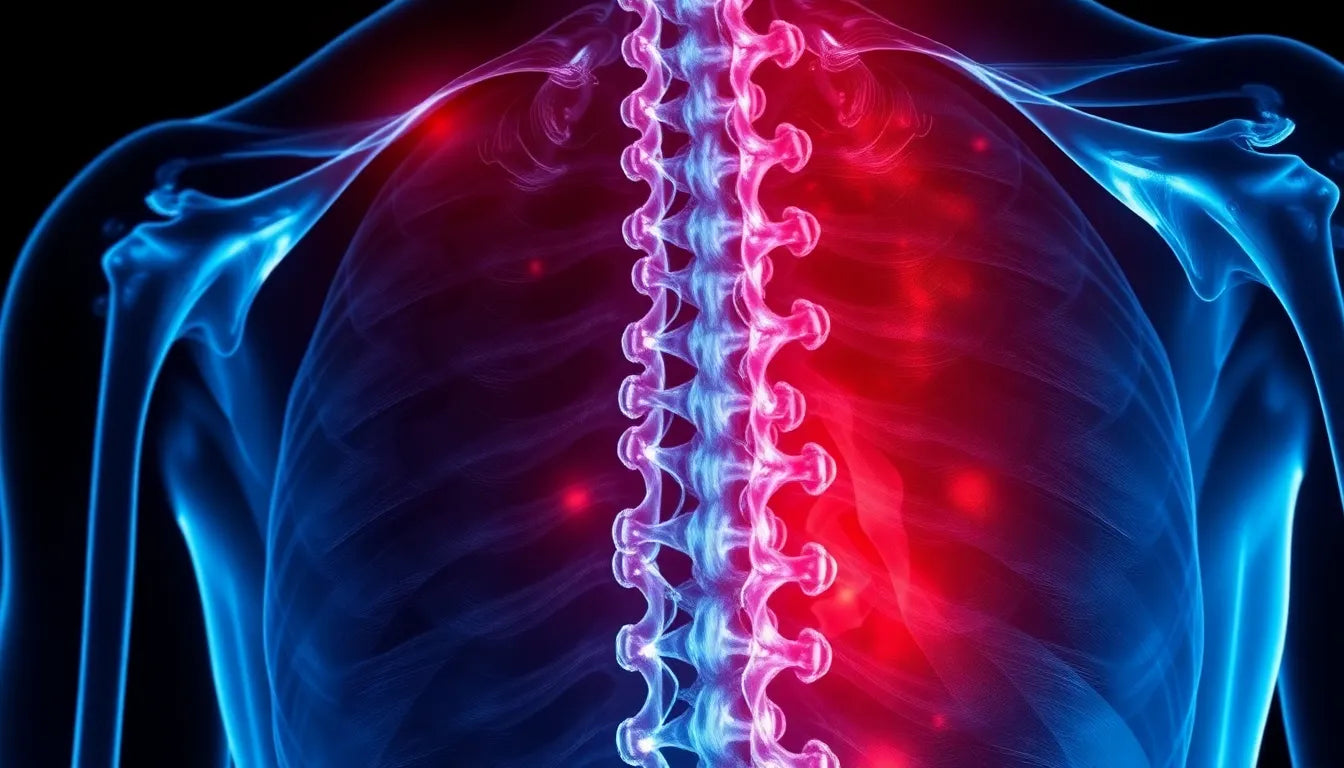Experiencing a herniated disc can be a daunting challenge, affecting not only physical health but also daily life activities. This common spinal condition occurs when the soft center of a spinal disc pushes through a crack in the tougher exterior casing. While it might sound alarming, understanding the healing process and timeline can help manage expectations and plan an effective recovery strategy.
understanding herniated discs
A herniated disc, sometimes referred to as a slipped or ruptured disc, is a condition that can occur in any part of the spine, but is most common in the lower back. The spine is composed of a series of bones (vertebrae) cushioned by discs. These discs act as shock absorbers, enabling flexibility and movement. When a disc herniates, its inner gel-like core leaks out through a tear in the outer layer, potentially irritating nearby nerves. This can result in symptoms such as pain, numbness, or weakness in an arm or leg, depending on the location of the herniation.
Several factors can contribute to a herniated disc. Aging is a primary cause, as the discs naturally lose some of their water content over time, making them less flexible and more prone to tearing. Other causes include sudden injuries, repetitive movements, or strain from activities such as heavy lifting. Understanding these causes is crucial for both prevention and management of the condition.
importance of recovery knowledge
Knowing how long it takes to heal a herniated disc is essential for anyone dealing with this condition. Recovery timelines can vary significantly based on individual circumstances, including the severity of the herniation, the specific location in the spine, and the patient's overall health and age. Having a clear understanding of the healing process can help individuals set realistic expectations, adhere to their treatment plan, and make necessary lifestyle adjustments to support recovery.
The journey to recovery from a herniated disc typically involves several phases. Initially, rest and pain management are critical, followed by gradual reintroduction of physical activity and targeted physical therapy. Each phase of recovery plays a vital role in ensuring long-term healing and minimizing the risk of recurrence. By staying informed and proactive, individuals can navigate the challenges of a herniated disc with greater ease and confidence.
Healing timeline and phases
The healing journey for a herniated disc is typically segmented into distinct phases, each with specific goals and activities designed to facilitate recovery. Understanding these phases can help individuals manage their expectations and make informed decisions about their treatment.
Immediate phase (1-2 weeks)
In the immediate aftermath of a herniated disc, the focus is primarily on rest and pain management. During this phase, it's crucial to minimize activities that might exacerbate pain or further stress the spine. Over-the-counter pain relievers and anti-inflammatory medications are often recommended to help manage discomfort. As pain begins to decrease, light activities such as short walks can be introduced, provided they don't aggravate symptoms.
Subacute phase (2-6 weeks)
The subacute phase marks a gradual reintroduction of movement and more structured physical therapy. During this time, patients are encouraged to increase their activity levels progressively, focusing on low-impact exercises that enhance flexibility and promote blood flow to the affected area. It's important to monitor pain levels closely and adjust activities as needed to avoid setbacks.
Rehabilitation phase (6 weeks to 6 months)
As recovery progresses into the rehabilitation phase, the emphasis shifts towards strengthening and flexibility exercises. This phase is critical for rebuilding muscle support around the spine and improving overall stability. Physical therapy sessions may become more intensive, incorporating exercises that target core strength and posture. Consistent participation in these activities can significantly enhance recovery outcomes and help prevent future herniations.
Chronic phase (beyond 6 months)
For some, recovery extends into the chronic phase, where ongoing evaluation of long-term recovery is necessary. At this stage, individuals might experience residual symptoms or chronic pain, necessitating a tailored management strategy. This could involve continued physical therapy, lifestyle modifications, or even exploring alternative pain management options such as acupuncture or chiropractic care.
Factors influencing healing
Several factors can significantly impact the healing timeline of a herniated disc, making it essential to consider individual circumstances when predicting recovery.
Severity and location of herniation
The severity and specific location of the herniation play a crucial role in determining recovery time. More severe herniations or those located in areas of the spine with high mobility demands might require longer healing periods and more intensive treatment strategies.
Age and overall health
Age is another critical factor, as younger individuals often recover more quickly due to better tissue elasticity and regenerative capabilities. Additionally, overall health and fitness levels can influence recovery, with healthier individuals generally experiencing faster healing.
Individual variability
Recovery from a herniated disc is highly individual, with each person experiencing a unique healing journey. Factors such as genetic predispositions, lifestyle habits, and adherence to treatment plans can all affect the speed and completeness of recovery.
Symptoms and signs of improvement
Monitoring symptoms and recognizing signs of improvement are essential components of the recovery process. These indicators can provide reassurance and guide ongoing treatment decisions.
Decrease in pain and numbness
A noticeable reduction in pain, numbness, and tingling is often one of the first signs of healing. As inflammation subsides and nerve irritation decreases, these symptoms should gradually diminish.
Increased mobility
Improved range of motion and a reduction in muscle spasms are positive indicators of recovery. These changes suggest that the spine is regaining its functional capacity and that the surrounding muscles are becoming stronger and more supportive.
Monitoring progress
Regular check-ins with healthcare providers are crucial for assessing improvement and adjusting treatment plans as needed. These evaluations can help ensure that recovery is on track and that any lingering issues are addressed promptly.
Treatment and prevention
Addressing a herniated disc effectively often involves a combination of treatments tailored to the individual's needs. Understanding the role of various therapies and lifestyle changes can facilitate a smoother recovery and help prevent future occurrences.
Physical therapy and medication
Physical therapy is a cornerstone of herniated disc treatment, focusing on exercises that improve flexibility, strength, and posture. A physical therapist can design a personalized program that gradually increases activity levels while minimizing the risk of aggravating the injury. In addition to physical therapy, pain management may involve the use of NSAIDs (non-steroidal anti-inflammatory drugs) to reduce inflammation and alleviate discomfort. For more severe cases, healthcare providers might consider epidural steroid injections to provide targeted relief. Surgery is generally reserved for situations where conservative treatments have failed and the patient's quality of life is significantly impacted.
Lifestyle changes
Implementing lifestyle changes is crucial not only for recovery but also for preventing future herniations. Maintaining good posture, especially during activities such as sitting and lifting, can significantly reduce spinal stress. Regular exercise, focusing on core strengthening and flexibility, supports spinal health and reduces the risk of injury. Additionally, maintaining a healthy weight can alleviate excess pressure on the spine, further aiding in both recovery and prevention.
Frequently Asked Questions
How long does it usually take to heal from a herniated disc?
Typical recovery times for a herniated disc can range from a few weeks to several months, depending on factors such as the severity of the herniation, its location, and the individual's overall health.
What are the first signs of herniated disc healing?
Initial signs of healing include a decrease in pain and increased mobility. These improvements indicate that inflammation is subsiding and that the spine is regaining function.
Can lifestyle changes really impact recovery?
Yes, lifestyle changes such as regular exercise, maintaining good posture, and managing body weight play a significant role in both recovery and prevention of future herniations.
When should I consider surgery for a herniated disc?
Surgery is considered when conservative treatments fail to provide relief and symptoms significantly impact the individual's quality of life. A thorough evaluation by a healthcare professional is necessary to determine the best course of action.
Is it possible for a herniated disc to heal without treatment?
Some herniated discs can improve with time and rest. However, medical advice is recommended to manage symptoms effectively and prevent complications, ensuring a comprehensive approach to recovery.


















